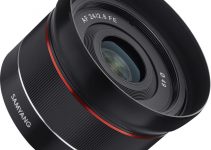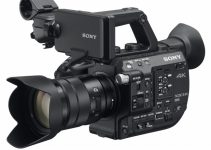We’ve reached an odd moment in the world of camera technology. You can now go pick up an iPhone that has log and ProRes available as a standard feature and not one you have to unlock with apps or hacks.
The iPhone 15 Pro Max asks an interested question and with the footage from phones already being shockingly good there might be times when shooters might wonder if they actually need to pull out a real camera.
If you are wondering if a smartphone can now replace your camera then this comparison from NO limits ON might interest you. They put the log shooting modes of the iPhone 15 Pro Max up against a Sony FX30.
Even if you aren’t going as far as replacing your main camera with an iPhone, it is helpful to see how the footage holds up next to each other since having an extra B or C camera can come in handy.
On a bright, sunny day with a wide landscape and the main iPhone camera the log footage looks great from both cameras. On this YouTube video, especially if you are watching on mobile, it may be hard to see any real differences in quality.
It takes zooming in to 500% to confirm that the iPhone is lacking a bit of detail and performs a more aggressive noise reduction. That doesn’t mean it looks bad, just that it may not be as ideal as a real camera. But, the iPhone will fit in your pocket.
When you move to the other iPhone cameras, like the wide, you’ll see there is a bit more noise and therefore more noise reduction which ends up killing the detail.
The 2x setting is also a digital crop so there will be a loss of detail there. If you are going to use an iPhone then you should stick with the main camera as much as possible.
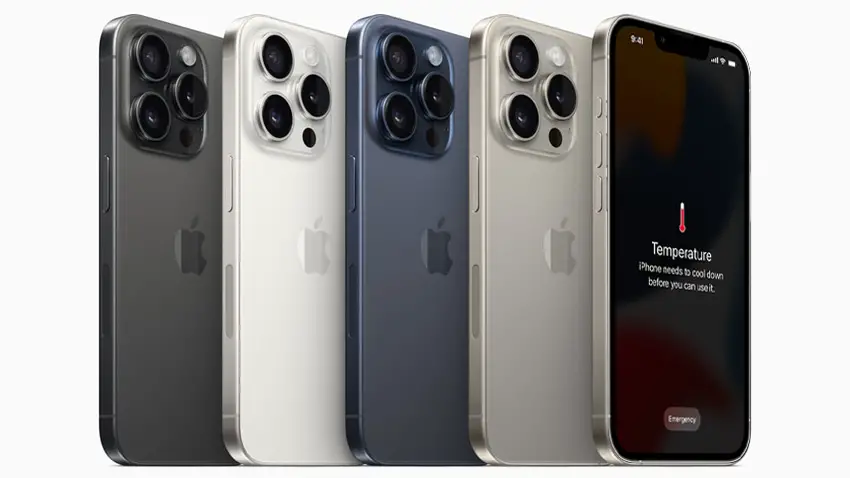
Image Credit: Apple
Good lighting does mitigate a lot of the potential issues.
One thing the iPhone does have is built-in stabilization and Apple’s methods are impressive. The iPhone absolutely blows away the SteadyShot stabilization of the FX30.
You’ll need to watch the performance of the app on the iPhone though since the stabilization can change between them.
Sony also does have an added trick with gyro stabilization. The FX30 can record metadata and then be used to do a more accurate post stabilization and this comes much closer to the iPhone performance.
The vlogging and mic test is a bit more revealing of how your footage can look. The iPhone looked like an iPhone.
It has a much deeper depth of field and lacked a bit of detail while the FX30 setup created much more separation from the background.
Audio was actually close between them, though if you want the best audio you should always add a mic to your rig.
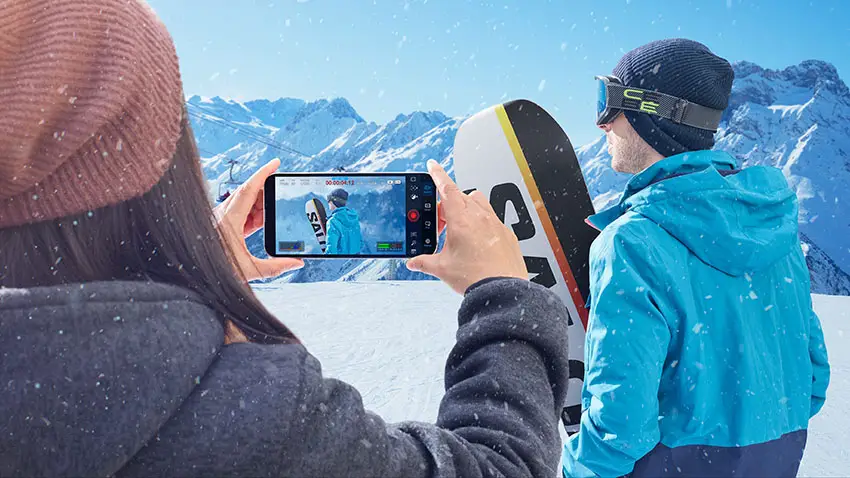
Image Credit: Blackmagic Design
Looking at dynamic range, the ProRes log mode of the iPhone at the base ISO setting will match up with the FX30 incredibly closely.
Apple is doing some software processing to make the images work well, especially with noise reduction in the shadows that lose a little detail. The potential of the FX30 is greater since you have more options in post.
The dynamic range of the iPhone is impressive and nearly in line with a real camera.
Cinematic Mode on the iPhone is designed to help create the shallow depth of field look you can get with true cameras.
It is actually very usable, but it doesn’t look as good or as natural as the FX30 clips. The iPhone footage looks good in some cases, but if you zoom in you can see the issues. It also doesn’t give you log.
One area where the iPhone doesn’t match up is with slow motion.
The iPhone will only reach 120p in Full HD while we have full 4K 120p on the FX30. The difference in detail in huge. If you want the best quality from an iPhone you’ll be limited to 4K at 60p with the main camera. The 120+ fps modes also don’t permit log shooting.
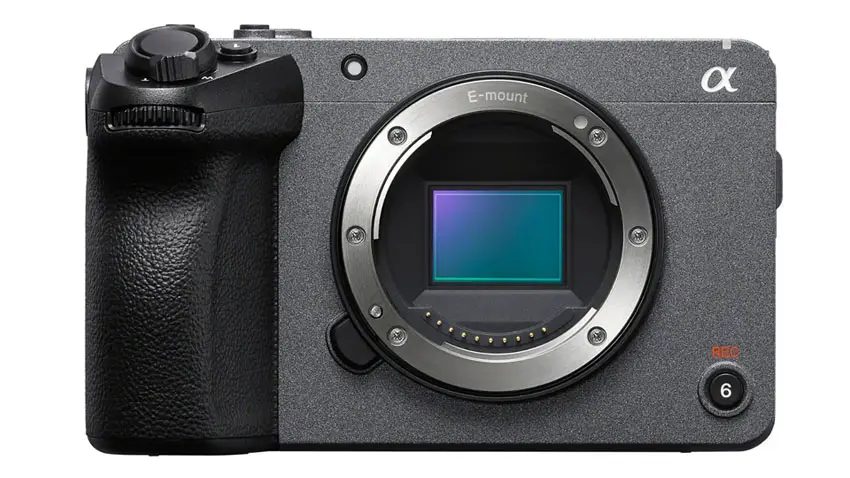
Image Credit: Sony
Timelapses are also still limited to Full HD in a standard profile.
Low light is going to be a real challenge for the iPhone. At 100% scale, you can tell there is some noise and loss of detail. If you push in a little bit you can see the distinct artifacts of highly processed smartphone footage.
Going with the standard profile can help improve quality a little. You are still getting those bothersome flares with light sources on the iPhone, too. The FX30 performs much better and more reliably here.
Apple does add a new 5x optical zoom option of the iPhone 15 Pro Max. This is about a 120mm equivalent and can be a nice option to have. Does it hold up against an actual telephoto lens? Not quite, but it is surprisingly good for a smartphone.
Overheating is something to consider. The FX30 basically won’t overheat since it has a built-in fan.
The iPhone can go for quite a bit, but it can get hot and this can result in the camera stopping during recording if it gets too hot. He ran into this after shooting for about 90 minutes.
Ergonomics are also an important distinction. The iPhone, obviously, doesn’t have a real grip and the screen is fixed if you were hoping to do some vlogging.
There is the selfie camera, but that is nowhere near the quality of the rear cameras. The FX30 has all the ergonomics you would expect, including a vari-angle touchscreen. The iPhone will get brighter though.
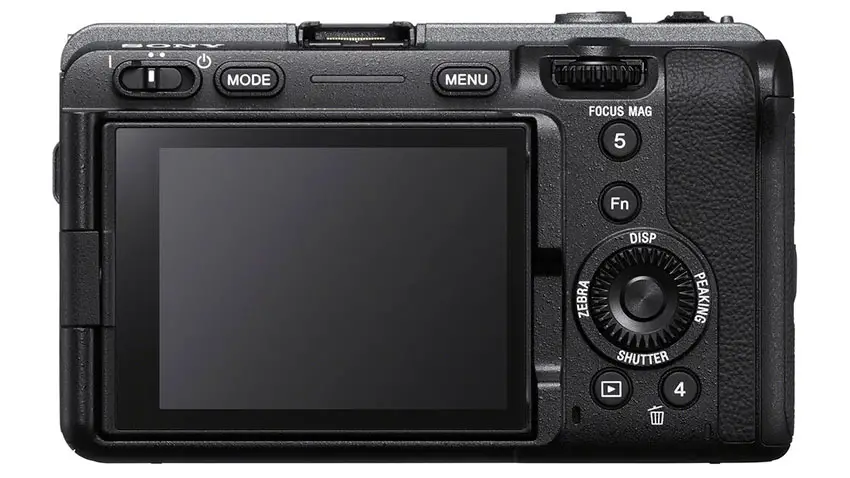
Image Credit: Sony
Battery life is an interesting comparison. The FX30 will go for a couple of hours and you can quickly swap out the batteries.
The iPhone will go for 3-4 hours on a full charge, which is great. However, you’ll have to plug in to get longer recording times and this will generate a lot of heat.
Lenses are the obvious difference. The iPhone has a few fixed lenses, though you can use add-on lenses though it isn’t quite as good optically or ergonomically.
The FX30 can use a huge array of different lenses. Obviously, the mirrorless camera is going to have more versatility here.
Can the iPhone hold up against the FX30? Even with the obvious issues with using the smartphone, the footage does look great.
For a B or C camera or just because it’s the camera you have in your pocket the iPhone will do the job and do it well.
Cutting in some iPhone shots here or there is likely something you can do on a full project and not have anyone notice.
What do you think about the latest iPhone video improvements?
[source: NO limits ON]
Order Links:
Disclaimer: As an Amazon Associate partner and participant in B&H and Adorama Affiliate programmes, we earn a small comission from each purchase made through the affiliate links listed above at no additional cost to you.


